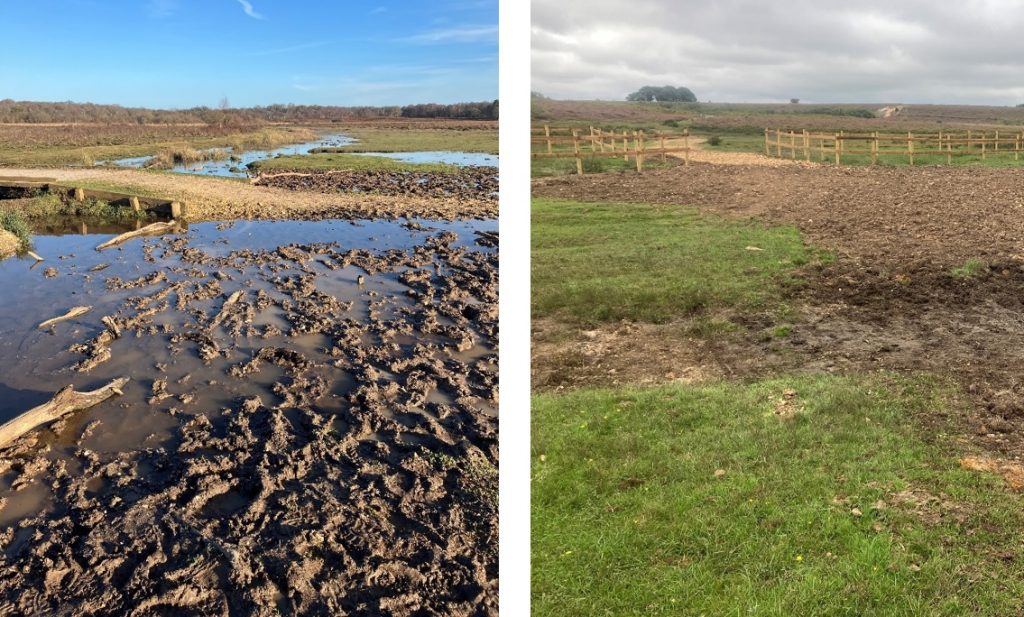In 2013, Forestry England (FE) began work to restore this key wetland that provides vital habitats for important species of plants and wildlife including ground-nesting birds, amphibians and many insects.
During the summer of 2024, we carried out the next phase of the work to ensure that water can flow naturally across the land.
New: Penny Moor vegetation surveys
What has been done and why
- How has the area been managed historically?
Artificial drainage was created across Penny Moor in the 1960s to dry out the ground and improve it for grazing. This meant that the natural watercourse, which was variable in depth and width, was cut off and replaced with a straight and uniform drain.
Due to the high water table and low gradient of this location, the drain required regular dredging as material was deposited on the banksides. This material created spoil banks which prevented water from being able to freely spread out across the floodplain, reducing the amount of naturally wet habitat.
In 2013, the original meandering route of the water was restored as one of the drains was partially infilled. A decision was made to leave part of the drain open following a vegetation survey which highlighted the presence of important plant life. These have now spread to the newly restored channel, enabling the remainder of the restoration work to be completed this summer.
2. What work has been done this summer?
FE have infilled the remainder of the old drain line, removed the spoil banks and dismantled two small bridges. While there was already a ford crossing on the restored meandering watercourse, a new ford (gravel) crossing has been added across the former drain line. This helps water flow across the wetland and enable ponies and other free-roaming animals to move through the area.
Any form of infrastructure alters the natural flow of water across the landscape. Bridges and culverts, in particular, focus the flow into a narrow path, concentrating energy in one place. In contrast, gravel fords allow water to spread out more naturally, reducing the risk of erosion downstream and helping preserve the natural landscape.
3. Why has a fence been put up around the old drain?
As the area is so naturally wet, it will take time for the material within the infilled drain to settle down and stabilise. Currently, it is still very sloppy and deep, so a fence has been put up to prevent livestock from trying to cross.
4. Closure of recreational path through the area
The area is not suitable for walkers and there is no longer a circular route here. In recent years, there have been a number of incidents where walkers have got into difficulties as a result of wet ground conditions and needed assistance. As the wetland recovers, the area will continue to be wet and at times impassable for humans, but wildlife will thrive here.
Managing the Forest is always a delicate balance between offering locations for people to enjoy time in nature and caring and protecting the unique habitats and wildlife who call it home. We hope that this restoration work will help improve and increase space for nature within the New Forest National Park.

Above: Map showing the restoration work done at Penny Moor. Green edged boxes show the work done in 2013. Pink edged boxes show the work done in 2024. A fence has been erected around the infilled drain while the area is stabilising.

Above: Map showing the path that is no longer accessible.
Pre and post restoration (Photos A and B)

Pre and post restoration (Photos C and D)

A and B) One of the bridges to have been replaced by a gravel ford. In winter, the ground around this area was extremely wet and poached, making it impassable. C and D) The red line in photo C shows the spoil heap which has been removed. This will allow water to spread out across the land. The fence visible in the photos has been erected to prevent stock from going through the infilled drain.